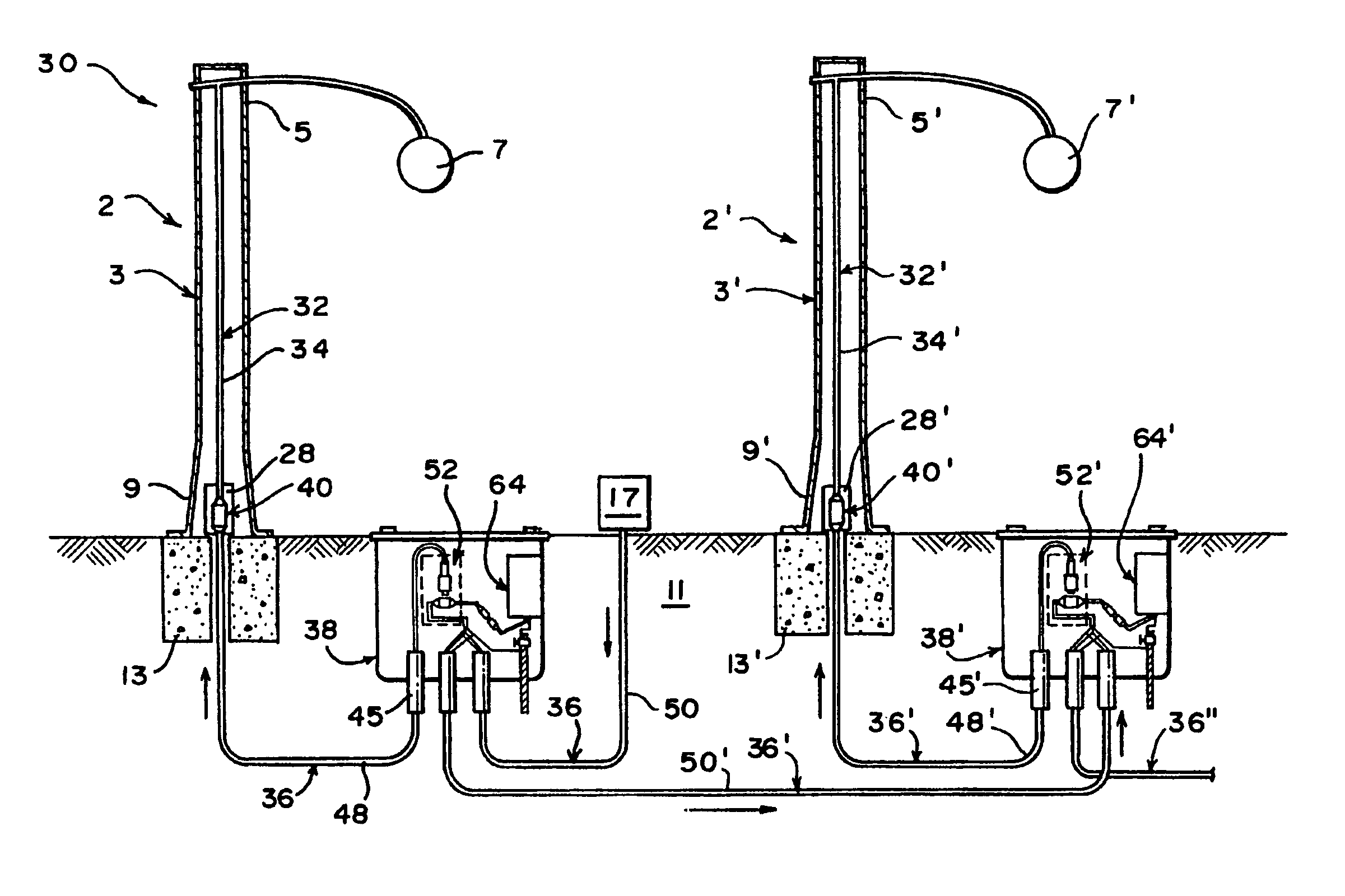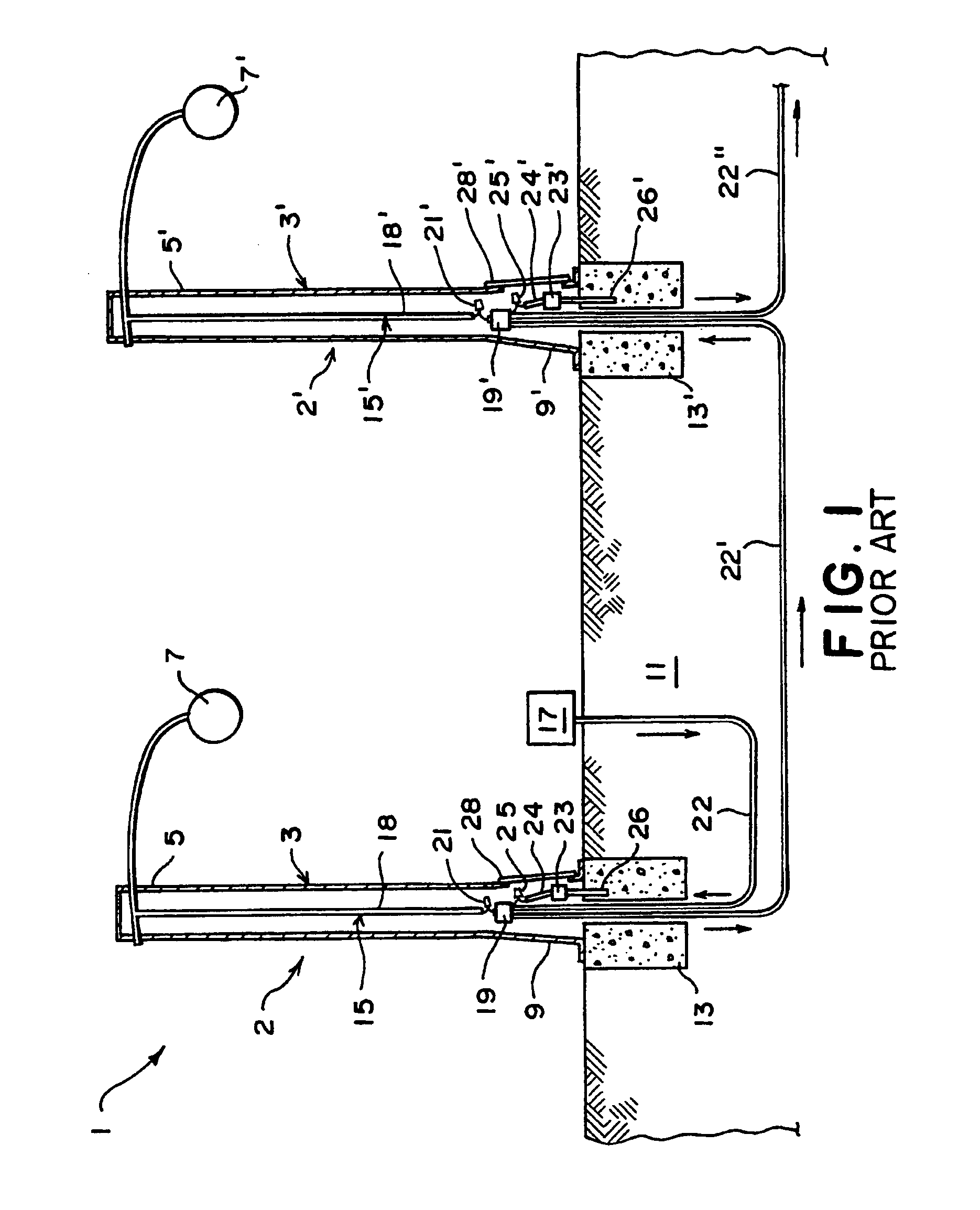Mast-type outdoor lighting system
a technology of outdoor lighting and mast-type, which is applied in the direction of coupling device connection, lighting and heating apparatus, ways, etc., can solve the problems of affecting the overall usefulness of the system, so as to prevent corrosion
- Summary
- Abstract
- Description
- Claims
- Application Information
AI Technical Summary
Benefits of technology
Problems solved by technology
Method used
Image
Examples
Embodiment Construction
[0018]With reference now to FIG. 1, the invention is an improvement of a lighting system 1 of the type comprising a plurality of light assemblies 2 and 2′, each of which includes a hollow metallic mast 3. Each mast 3 includes a distal end 5 for supporting a light source 7 and a proximal end 9 mounted in the ground 11 by means of a concrete reinforced underground base 13. Disposed within the interior of each the masts 3 is an electrical power cable 15 which interconnects the light source 7 of each of the light assemblies 2 with a power source. In the case of the first light assembly 2, the power source is an outlet of an above ground circuit breaker 17. In the case of the second assembly 2′ (and all subsequent light assemblies not shown) the power source is an outlet of the fuse assembly 19 of the adjacent light assembly. Hence, should the circuit breaker 17 become tripped by any of the light assemblies 2, 2′ for any reason, all of the light assemblies ultimately connected to it will...
PUM
 Login to View More
Login to View More Abstract
Description
Claims
Application Information
 Login to View More
Login to View More - R&D
- Intellectual Property
- Life Sciences
- Materials
- Tech Scout
- Unparalleled Data Quality
- Higher Quality Content
- 60% Fewer Hallucinations
Browse by: Latest US Patents, China's latest patents, Technical Efficacy Thesaurus, Application Domain, Technology Topic, Popular Technical Reports.
© 2025 PatSnap. All rights reserved.Legal|Privacy policy|Modern Slavery Act Transparency Statement|Sitemap|About US| Contact US: help@patsnap.com



